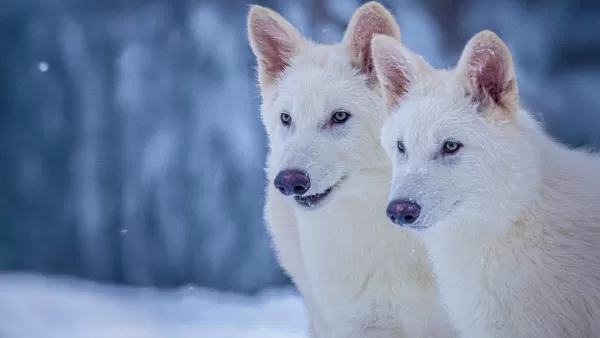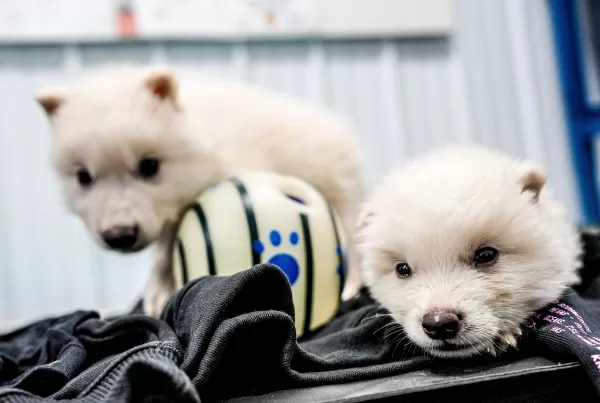Bringing a super-sized canine back from extinction after 12,500 years sounds like the plot of a blockbuster movie filled with special effects like gnawed flesh and fake intestines. However, it's not fiction; it's reality. The world now has three dire wolves living in a secret location in the US, thanks to the efforts of Colossal Biosciences, a biotech company that combined the DNA of the common gray wolf, gene-editing, and domestic dog surrogates to bring Romulus, Remus, and their younger sister, Khaleesi into existence. These wolves are every bit as impressive as one might imagine—huge, white, and undeniably awe-inspiring.
 Romulus and Remus at three months old
Romulus and Remus at three months old
Ben Lamm, CEO of Colossal Biosciences, expressed immense pride in the team's achievement, stating, “This massive milestone is the first of many coming examples demonstrating that our end-to-end de-extinction technology stack works.” The process involved using DNA from a 13,000-year-old tooth and a 72,000-year-old skull to create healthy dire wolf puppies. Lamm added, “It was once said, ‘any sufficiently advanced technology is indistinguishable from magic.’ Today, our team gets to unveil some of the magic they are working on and its broader impact on conservation.”
 Romulus and Remus at one month old
Romulus and Remus at one month old
Colossal Biosciences has previously made headlines with their creation of the Colossal Woolly Mouse, designed to mimic the appearance of a mammoth using computational analysis of 59 woolly, Columbian, and steppe mammoth genomes. Despite these successes, the company faces criticism from those who argue that the dire wolves are essentially normal wolves in elaborate costumes. Critics claim that the available dire wolf DNA is insufficient to create a true genetic clone.
However, the company's ambitions extend beyond creating social media sensations or owning exotic pets. Colossal Biosciences aims to leverage its findings to aid in the preservation of current species for future generations. Dr. Christopher Mason, a scientific advisor and board member of Colossal, emphasized the transformative nature of this work, saying, “The de-extinction of the dire wolf and an end-to-end system for de-extinction is transformative and heralds an entirely new era of human stewardship of life.”
He further explained that the technologies developed for the dire wolves could significantly contribute to saving other endangered species, stating, “The same technologies that created the dire wolf can directly help save a variety of other endangered animals as well. This is an extraordinary technological leap in genetic engineering efforts for both science and for conservation as well as preservation of life, and a wonderful example of the power of biotechnology to protect species, both extant and extinct.”
The dire wolves themselves are housed on a 2,000+ acre preserve, vetted by the American Humane Society and the USDA, with a dedicated staff to ensure their well-being, treating them like the superstars they have become.















